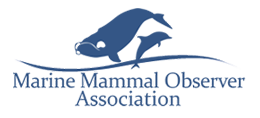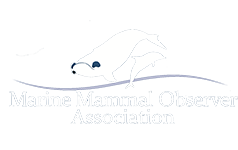This section is aimed at providing guidance to MMOs and PAM Operators (hereafter referred to as the ‘mitigation team’) on their conduct during offshore operations. It is also aimed at providing guidance to MMO/PAM providers and Clients regarding the representatives they contract to fulfill these roles.
Knowledge of Regulatory Requirements
The mitigation team has a duty to ensure they are familiar with all documentation outlining mitigation procedures (including regulatory guidelines specific to the survey area but also the project specific conditions outlined in project licenses and permits) prior to the project commencing. They should ensure that they have a thorough understanding of this documentation and always have it to hand to provide advice to the client / contractors when required. On arrival on the platform/ vessel or during the start up meeting, the mitigation team should provide a detailed summary of the mitigation requirements to key project personnel but also ensure that all operational contractors are aware of the expectations. They should be able to answer questions confidently about the mitigation procedures in place and also have an understanding of the rationale for the procedures. Producing and presenting a very brief summary of procedures which also highlights the recommended lines of communication to each department onboard is often a useful means of making project documentation more digestible in the field.
Diligent Observation/Monitoring
The mitigation team should always ensure they will be on time for their watches and build a good relationship with the operations team so you are given plenty of warning to commence watches and prevent delays. They should perform their observation and monitoring duties to the best of their abilities and remain diligent throughout the duration of the watch. Leading by example in this regard tends to encourage muchgreater cooperation with the operational contractors. MMOs should have professional binoculars (good light gathering ability, waterproof, suitable magnification for scanning at sea, wide field of view and range estimation ability is recommended) which they should use to scan the mitigation zone, and adjacent waters, regularly. It is the MMO’s responsibility to ensure that they are aware of any specific requirements with regard to what type of binoculars are required for the country they are working in (for example, some countries require the use of reticulated binoculars). Data recording should be prompt and efficient allowing for observations to be resumed as soon as possible with minimal disruption. PAM Operators should remain at their station and remain wholly focused on monitoring PAM software and listening to acoustic signals. Take breaks to minimize fatigue but time these breaks around operations wherever possible and where available, seek cover whilst you are away from your observation platform or workstation.
Recording Data and Species Identification
The mitigation team should be diligent in the recording of data and make sure data is checked on a regular basis. All entries should be as accurate as possible and without subjectivity. They should have appropriate identification books/cameras if applicable to aid them with species determination. The MMOA emphasises that species identifications should never be guessed and personnel are encouraged to raise identification to a higher taxonomic level where confidence in species is not high. Assuming species identification is considered bad practice, reduces the reliability of the dataset and may render it unfit for data analysis. The lowest definite category of identification should be adopted as the formally reported speciesidentification at all times. In other words ‘definite dolphin species’ is more appropriate than ‘possible bottlenose dolphin’, although the latter can also be noted in a comments section of the reporting forms. The MMOA stresses that no pressure should be placed on the mitigation team to make a positive species identification. On the contrary, this is often not possible due to the nature of marine fauna and the often challenging viewing conditions at sea.
Accurate Range Determination
The mitigation team should estimate range as accurately as is possible given the prevailing conditions. MMOs should have suitable equipment (reticulated binoculars, inclinometers or range sticks) to determine range and PAM Operators should have sufficient knowledge to interpret PAM software to determine range (when the software permits). Take the opportunity to test your ranging capabilities against objects at known distances by using the vessel’s radar / AIS system.
Use of Handheld Radios
The mitigation team should use handheld radios in accordance with the platform / vessels protocol and operational language (i.e. using the platform’s working channel and following good radio practice). They should remember that communications must be kept to a minimum and that instructions must be clear and decisive. The mitigation team should make sure they test the communications prior to the first pre-watch and regularly during the project to avoid any issues when a radio call is required. They should always check that their radios are charged and on the correct channel, and should not compromise communication by listening to loud music. They should not have disputes over the radio.
Taking Mitigating Actions
The mitigation team should remain professional and adhere strictly to the mitigation procedures determined for the project. They should advise on mitigation actions in a clear, concise and polite manner to the platform’s crew, and ensure that measures are implemented swiftly. At all times, it must be remembered that they are there to advise on mitigation actions in line with the project licenses and should never consider their role to be enforcement. Advice should be unambiguous, non-subjective and firm.
Non-compliance
In any cases of non-compliance the mitigation team should adhere to the communication protocol established by the Client. They will remain calm, professional and respectful in these situations. For transparency the mitigation team should log in detail the sequence of events of any non compliance in case future disputes arise. Non-compliance should be discussed onboard and documented in daily progress reports to provide an opportunity for the operations team to acknowledge, understand and prevent reoccurrence.
Reporting
The mitigation team should report honestly and concisely the details of their observation/monitoring effort, weather conditions, sound source activity, sightings/acoustic detections and adherence to the mitigation procedures. Avoid documenting opinion in the technical report and provide an unbiased, factual account of the survey programme to include all supporting data (e.g. recording forms provided as an appendix to the report for ease of access). Reports should be checked thoroughly for technical content and grammar and submitted within the agreed timeframe which should be outlined from the onset. Utiliseweather downtime to work on reports and ensure thorough handovers are undertaken between rotations.
Respect Data Confidentiality
The mitigation team should be aware that they are working for an operation with sensitive data and will respect this. No information should be distributed without following the correct reporting protocol determined prior to the project. Project confidentiality must also be upheld when using social media and client internet safety procedures adhered to at all times.
Respecting Safety Policies
During certain operations or exercises on the platform/ vessel the mitigation team should be aware that they may be required to wear Personal Protective Equipment (PPE) or be excluded from certain work areas. They should select their work area within appropriate safety boundaries and receive formal approval for workstations from the client. If they are unsure about any activity or workspace they should ask the Captain, Chief Officer or Party Manager first. The mitigation team should be aware that they are expected to attend safety drills and any safety meetings when requested. If they need to be exempt from these because they must be on watch, they will seek prior approval for this first with the Captain or Chief Officer.
Appropriate Dress
The mitigation team should dress appropriately for their role. This means in cold climates they should have appropriate warm and waterproof clothing for observation outside. In warm climates they should wear suitable clothing and sunscreen to avoid sunburn. Follow the project specific risk assessment for working in extreme weather conditions.
Remain Professional at all Times
Even when mitigation team members are off watch they will act professionally. They will consider the close working environment on-board the platform and respect the roles and responsibilities of others. They will not distract other crew members from their duties and will be aware that people may be asleep during the day and that they may need to be quiet in certain areas of the platform/ vessel. All personnel should behave accordingly and refrain from entering inappropriate discussions which may cause offence to others and/ or have damaging consequences to the project. Where necessary, inappropriate behavior should be reported at the soonest and any appropriate action taken to ensure all personnel feel comfortable in their work environment.
Being Part of a Team
The mitigation team may comprise several MMO and PAM Operators who will be expected to work as a team. The mitigation team members will respect the person who has been assigned to lead this team and the duties they have to perform. They will be supportive at all times. The mitigation team should also be aware that for the period of time they are on the platform/vessel they are also part of the wider on board community

